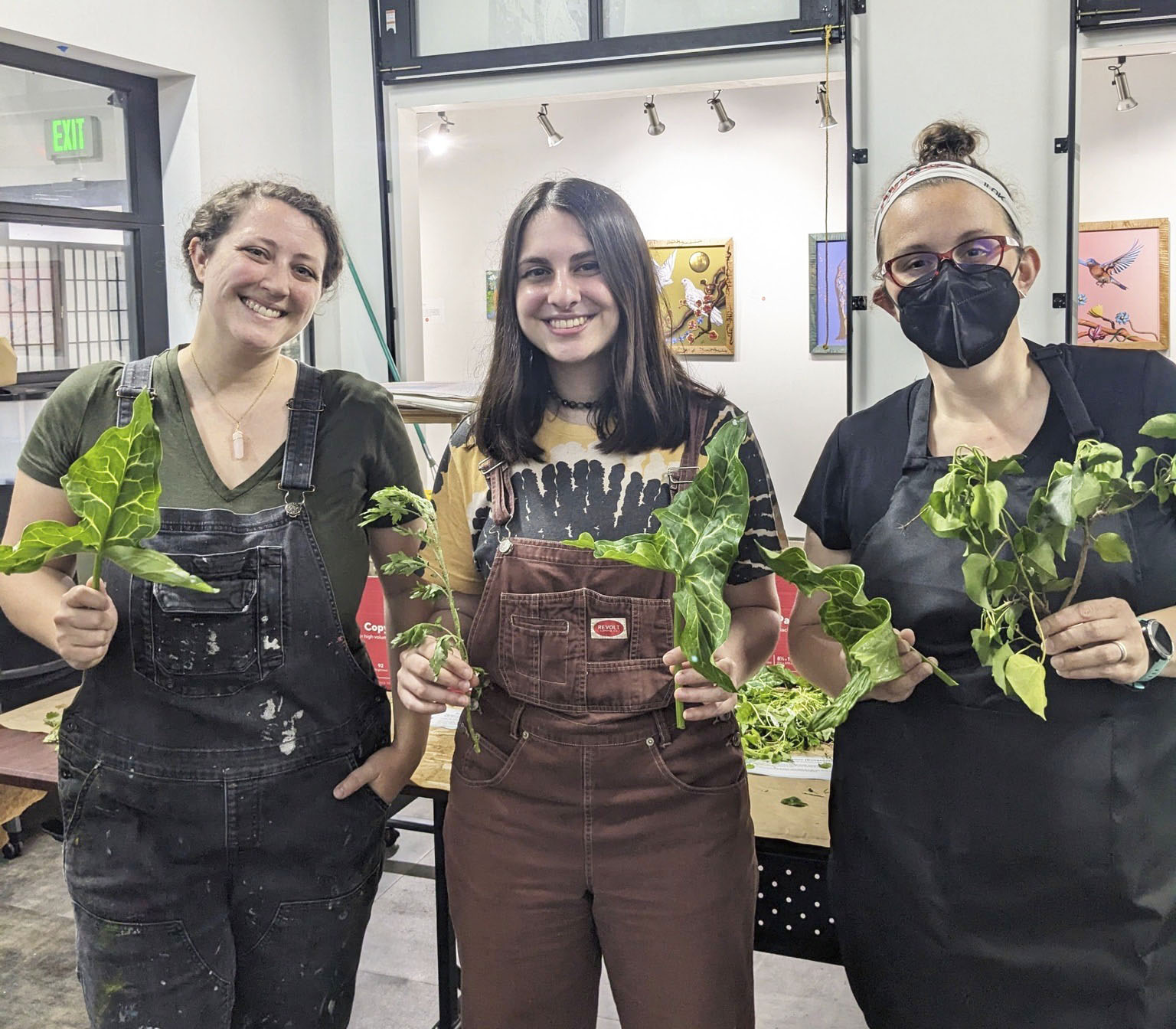It’s a spring morning, and Isabel Dastvan ’22, geography and environmental systems, is slowly wending her way through the Conservation Environmental Research Area (CERA) at the southern edge of UMBC’s main campus. Braving the uneven terrain and an occasional thorny branch, she’s carefully recording the presence of a long list of invasive species with photos and in a notebook: garlic mustard there, wavyleaf basketgrass over there, and porcelainberry everywhere.
Over several weeks in fall 2022 and again in spring 2023, Dastvan painstakingly completed a survey of campus invaders—from English ivy to Japanese stiltgrass—all the way from CERA to wooded land north of UMBC’s dorms. Dastvan’s work revealed that there are at least 100 invasive plant species present in natural and managed spaces on campus, which can threaten native species, reduce ecosystem functions like pollination and water filtration, and increase the chance of fires by thickening vegetation.
“UMBC has a long history of agricultural use and urban development, and with land disturbance we’re seeing a lot more invasive species,” says Dastvan, who is excited to apply knowledge she gained as a UMBC undergraduate to real ecological challenges. Some invasives are weakening or even killing native trees, she explains, and trees “are one of the important environmental assets we want to protect to be a more resilient campus in the face of climate change.”
Growing capacity, training leaders
Throughout the academic year, and in deep collaboration with Facilities Management staff, Dastvan completed on-the-ground surveys, created maps of invasive species on campus, identified the most urgent invasive threats, and determined the best ways to combat their spread. The end result is a 187-page, comprehensive Invasive Species Management Plan for UMBC, which Dastvan published in June. Moving forward, Facilities Management staff, led by landscape and grounds manager Charles Hogan, will implement the plan, continuing UMBC’s legacy of prioritizing sustainability and stewarding the land the university occupies.
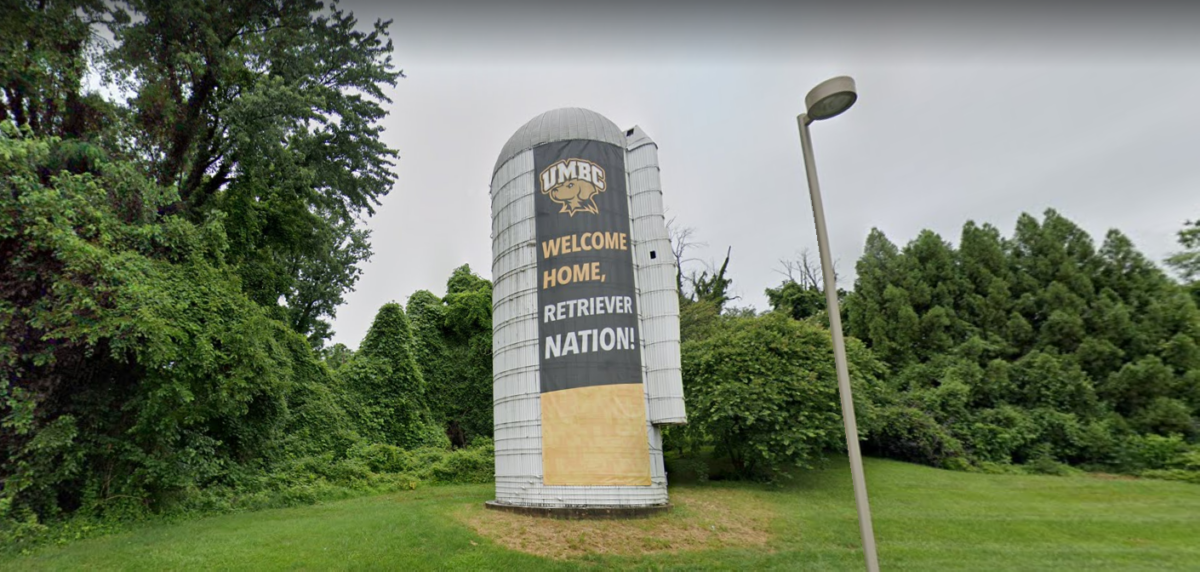
Dastvan completed the plan as a 2022 – 2023 Sustainability Fellow with Climate Corps, a program for recent college graduates supported by the non-profit Strategic Energy Innovations in California and the Hannon Armstrong Foundation in Annapolis, MD. Climate Corps connects emerging leaders like Dastvan with non-profits, businesses, governments, and universities with sustainability project needs. Fellows gain valuable professional experience and the institutions they support gain capacity to reach their sustainability goals.
Connecting with the community
UMBC will benefit for years from Dastvan’s work as a Fellow. In addition to the invasive species management plan, she worked to increase awareness of invasive species throughout the UMBC community by meeting with student organizations and informally engaging with people on campus. Dastvan collaborated with the student-led Environmental Task Force club to host weekly cleanups removing invasive plant species in addition to their weekly trash cleanups on campus.
Dastvan also co-hosted an art-making event at Oca Mocha using invasive plant material from campus and recycled paper with Jessie Houff, who has an M.F.A. in community art and is passionate about papermaking and teaching. Dastvan even collaborated with UMBC Dining to inform students about invasive species and offer them at True Grit’s—Chesapeake Bay Blue Catfish, anyone?
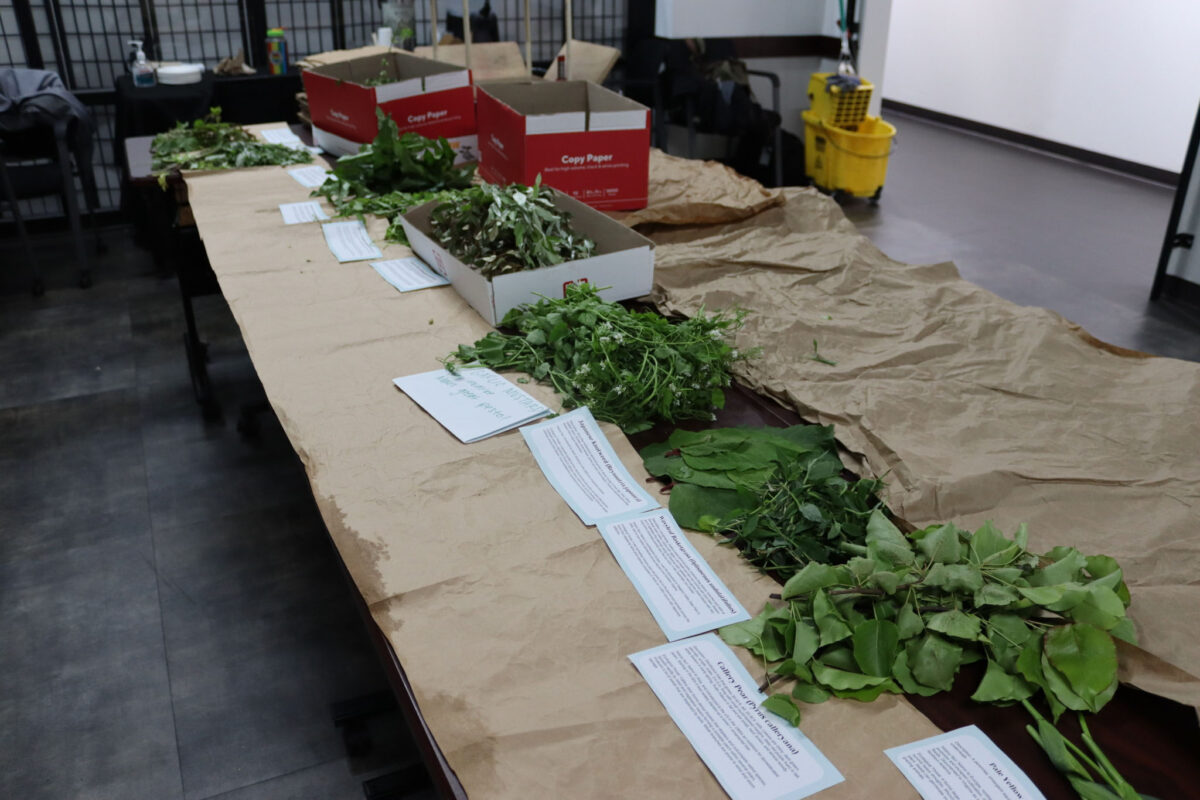
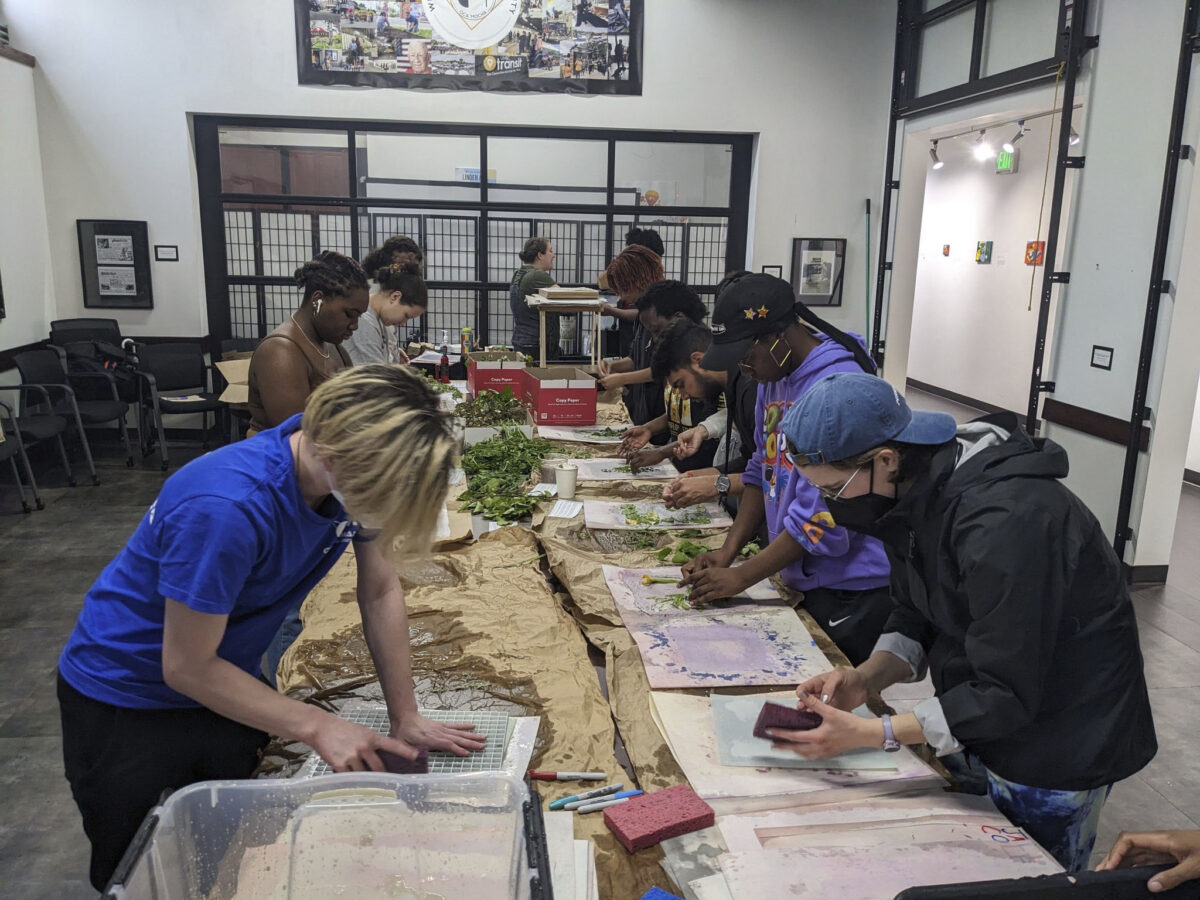
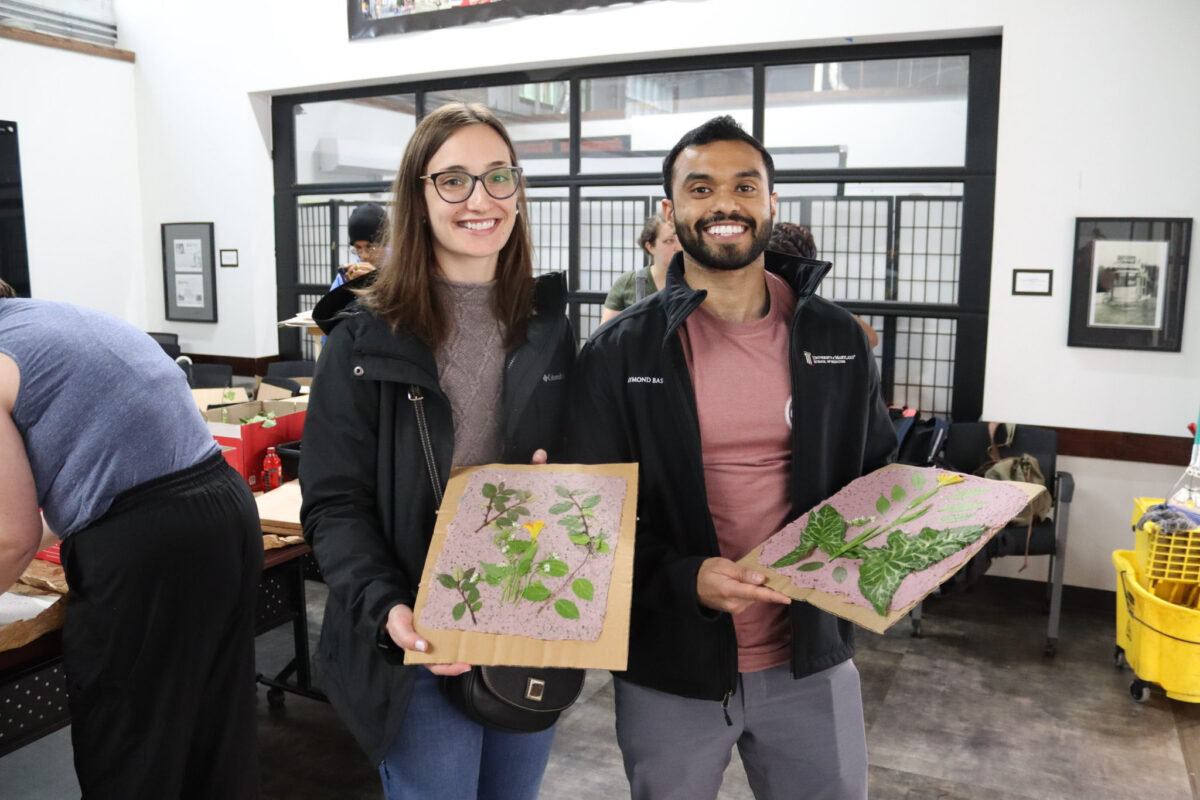
The threat of invasive species is “something that needs to be taken more seriously,” Dastvan says, “so if there are different ways that we can get the community involved, and genuinely excited, I think that’s the best way to go about tackling it. There are a lot of people who are enthusiastic about learning and willing to help out, and a community that creates a space for that is absolutely necessary.”
Claire Runquist, environmental sustainability coordinator at UMBC, oversaw Dastvan’s work. “Bella’s work on invasive species was incredibly valuable to campus—prior to this we didn’t have a comprehensive understanding of what invasive species we had on campus or where exactly they all were,” she shares. “Her project combined GIS mapping along with best management practices and led to prioritization for management.”
Finding her own path
For Dastvan, the impact of her fellowship will likely be even longer-lasting than her invasive species management plan. As a GES major at UMBC, Dastvan threw herself into her studies, including working with the Office of Sustainability to support a farmer’s market on campus. But when she started UMBC’s accelerated master’s program in GES while finishing her Bachelor’s degree program, she quickly experienced burnout. She decided to take some time off from her studies to gain relevant professional experience, and when she saw the Climate Corps program on a UMBC graduate student listserv, it was the perfect fit.
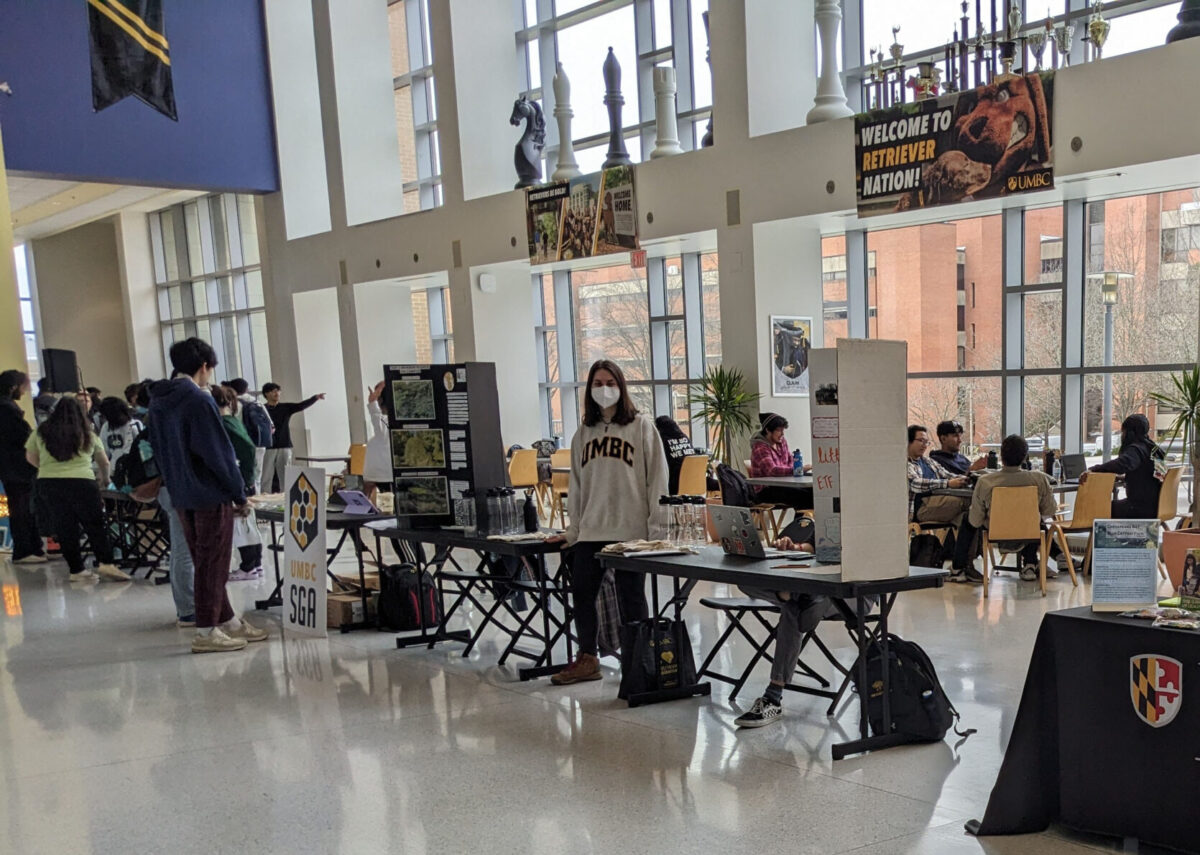
When she was selected as UMBC’s Sustainability Fellow through the program, it was a homecoming. “I was very excited to be able to work with the sustainability office from a different lens and be involved on campus in a new way,” Dastvan says.
Her undergraduate degree from UMBC provided the foundational knowledge and skills to make her an effective fellow, and through the Climate Corps program, she gained additional technical and leadership skills and confirmed her desire for a career in a related field. Dastvan was recently thrilled to accept a position as a horticultural technician at Silvec Biologics—and she’ll carry her UMBC experiences everywhere she goes, she says, adding, “I’m just really grateful to have had this opportunity to be on campus and contribute.”
Tags: Alumni, CAHSS, GES, sustainability

